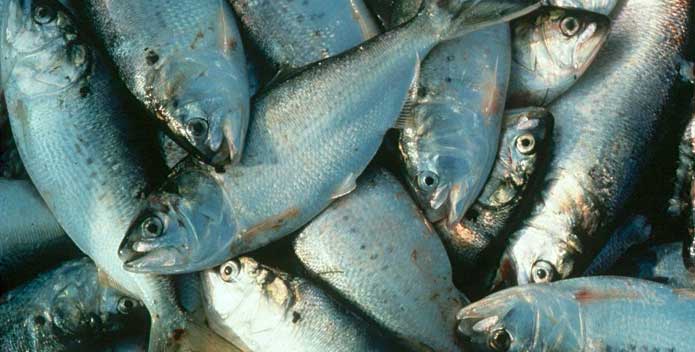Virginia’s menhaden harvest, now under the control of the Virginia Marine Resources Commission (VMRC), has officially been reduced by 10 percent to comply with the Atlantic coast-wide fishery quota.
It’s the first state reduction since VMRC took over management of the fishery from the General Assembly. In recent years, Virginia legislators had failed to adopt limits set by coastal fishery managers, and ultimately the Atlantic States Marine Fisheries Commission (ASMFC) found Virginia out of compliance. That lack of compliance put Virginia at risk of a menhaden fishing moratorium, but VMRC’s taking over management of the fishery in April 2020 avoided the looming moratorium.
In August, ASMFC committed to using Ecological Reference Points in its fishery decision-making, which take into account menhaden’s role in the food chain, not just its abundance. As Bay Bulletin reported, ASMFC voted in October to reduce the entire Atlantic catch by 10 percent.
To comply, VMRC cut Virginia’s harvest from 168,213 metric tons to 151,392 metric tons. The Chesapeake Bay harvest cap remains unchanged.
“The Commission is committed to supporting the movement toward ecosystem-based management,” Commissioner Steve Bowman says in a statement to Bay Bulletin. “It is clear that a more abundant forage base must work hand-in-hand with controls on fishing mortality for predator populations in order to rebuild our important recreational species.”
Virginia’s menhaden industry sees the largest impact of an East Coast reduction because of a single company—Omega Protein, America’s largest fish meal processor—which is based in Richmond. The company opposed the reduction in October.
“Menhaden fishermen, bait users and fishery stakeholders throughout the Atlantic coast urged the ASMFC to maintain the current [catch limit]. These are the people whose livelihoods depend on a healthy menhaden population and who will now face economic hardships from the reduction,” said a statement from Omega.
Environmental advocates, on the other hand, applaud VMRC’s adoption of the 10 percent harvest cut. The Chesapeake Bay Foundation (CBF) has long argued for fishery managers to formally consider the importance of menhaden to the species that prey on them, including striped bass, whose population has struggled in recent years.
In a statement, CBF Senior Regional Ecosystem Scientist Chris Moore says, “By considering menhaden’s role in the food chain in catch limits, ASMFC and now Virginia have taken an historic step forward to help ensure healthy fisheries in the Chesapeake Bay and along the Atlantic Coast. In adopting the revised quota, VMRC is working to ensure enough menhaden will remain in the water to serve as food for larger fish and other wildlife while also supporting sustainable fisheries.”
-Meg Walburn Viviano




